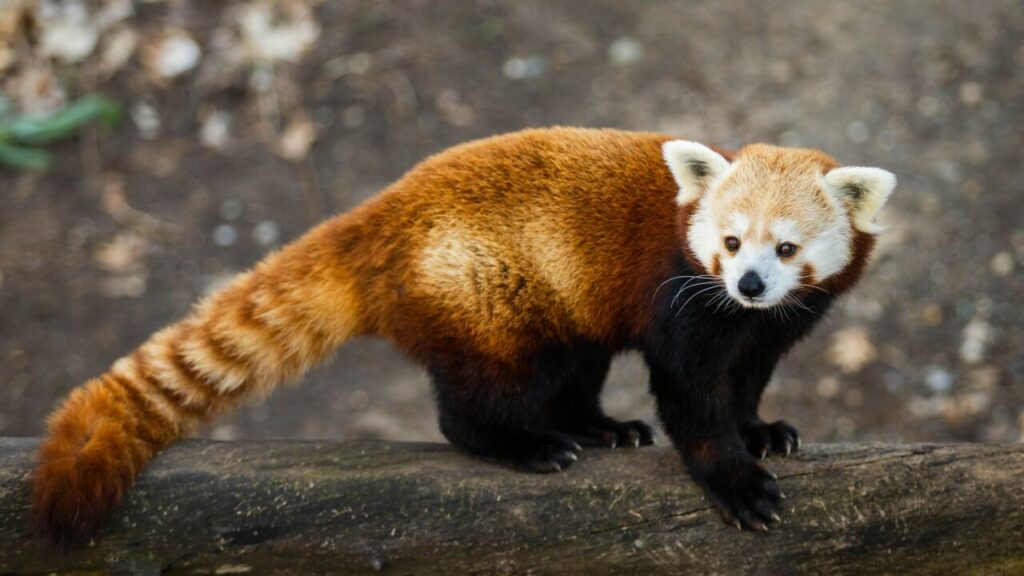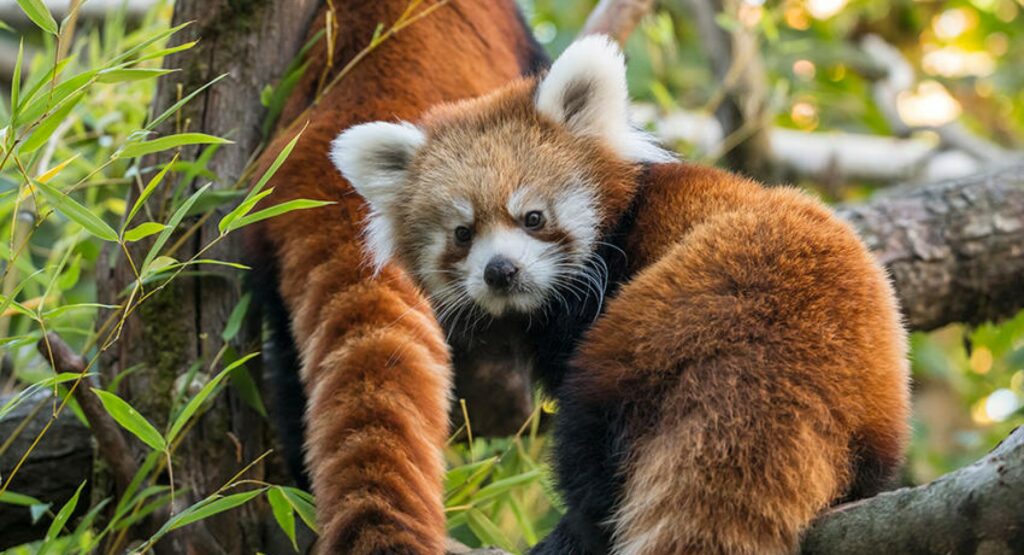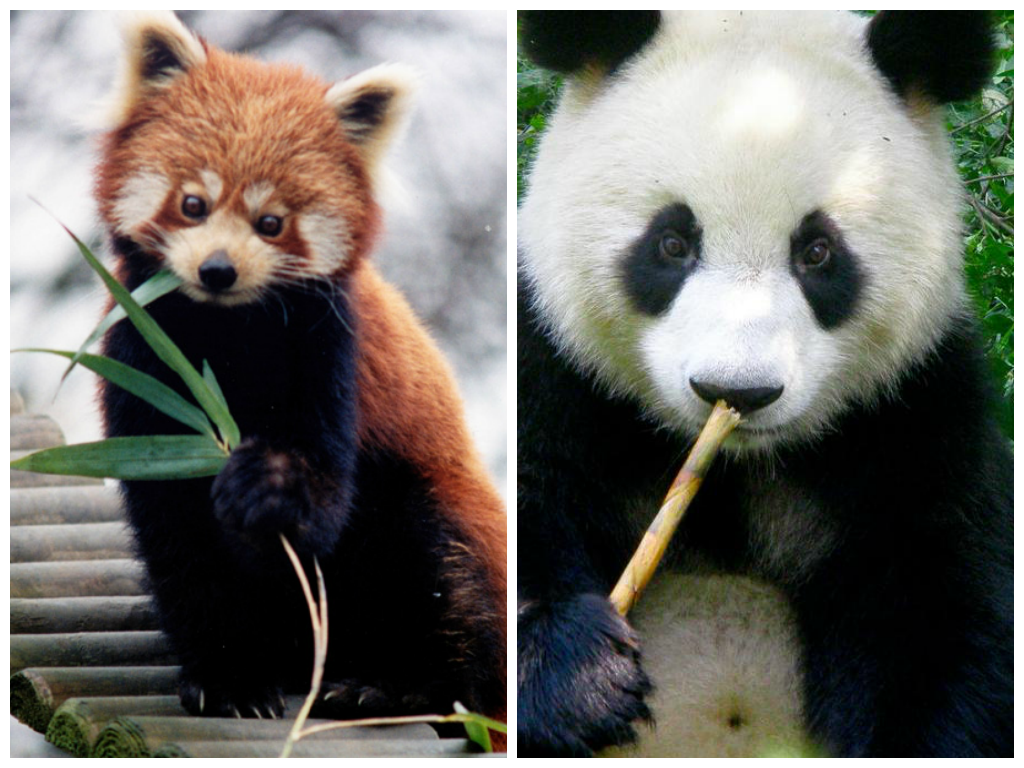Is the Red Panda a true panda?

The Red Panda, scientifically known as Ailurus fulgens, is a fascinating creature that has often been associated with its larger namesake, the Giant Panda. However, despite their similar name and appearance, there are notable differences between the two species.
Red Panda’s Classification
The classification of the Red Panda (Ailurus fulgens) has been a subject of scientific inquiry and debate for many years. While its common name includes the term “panda,” suggesting a connection to the Giant Panda (Ailuropoda melanoleuca), genetic and morphological studies have revealed fascinating insights into the evolutionary history and distinctiveness of the Red Panda.
Morphological Distinctions
At first glance, the Red Panda shares certain physical characteristics with the Giant Panda, such as a predominantly herbivorous diet and a specialized wrist bone structure for grasping bamboo. However, closer examination reveals significant differences that indicate a separate evolutionary lineage.
One notable distinction is the size and build of the two species. While the Giant Panda is much larger and robust, the Red Panda is smaller and more agile, resembling a raccoon in size and shape. Additionally, their skull structures, dental adaptations, and digestive systems differ, reflecting distinct adaptations to their respective diets and ecological niches.
Genetic Insights
Advancements in genetic analysis have provided insights into the evolutionary relationships of the Red Panda. Studies utilizing DNA sequencing techniques have demonstrated that the Red Panda belongs to the family Ailuridae, distinct from the Ursidae family to which the Giant Panda belongs. This genetic evidence supports the classification of the Red Panda as a unique species within its own taxonomic group.
Furthermore, phylogenetic studies based on molecular data have revealed a closer evolutionary relationship between the Red Panda and certain species within the superfamily Musteloidea, which includes animals like raccoons, skunks, and weasels. This evolutionary link, combined with morphological and ecological differences, reinforces the distinctiveness of the Red Panda as a separate lineage from the true pandas.

More Raccoon Than Panda
Red Pandas possess a unique blend of features that set them apart from true pandas (giant pandas) and other species. They are relatively small mammals, with a body length ranging from 50 to 64 centimeters (20 to 25 inches) and a tail length of 30 to 60 centimeters (12 to 24 inches). Their weight typically falls between 4 and 6 kilograms (9 to 14 pounds).
One of the most distinctive traits of red pandas is their reddish-brown fur, which serves as effective camouflage in their forested habitats. This fur coloration extends from their head, back, and sides to their bushy tail, providing insulation against the cold and aiding in their arboreal lifestyle.
Compared to true pandas, red pandas have a more slender build and a longer tail proportionally. Their round faces feature white markings around the eyes, resembling spectacles, and they have sharp, retractable claws that enable them to climb trees with agility. Red pandas have a specialized wrist bone called the “false thumb”, a trait shared with giant pandas, which aids in grasping bamboo shoots and other vegetation, although they are primarily omnivorous and also consume fruits, insects, and small mammals.
True pandas (giant pandas) are much larger in size, with distinct black and white fur patterns, stockier bodies, and a diet predominantly consisting of bamboo.

Behavior and Ecology of Red Pandas vs True Pandas
Red Pandas and true pandas (giant pandas) share similarities in their diet preferences for bamboo, but their behavior and ecology exhibit notable differences due to their distinct evolutionary histories and adaptations.
Red Pandas
Arboreal Lifestyle: Red Pandas are highly adapted for life in trees, spending a significant portion of their time climbing, foraging, and resting in forest canopies. Their long, bushy tails aid in balance, and their sharp claws enable them to navigate branches with agility.
Solitary Behavior: Red Pandas are primarily solitary animals, except during the breeding season or when females are caring for young. They establish territories marked with scent and communicate using vocalizations and body language.
Crepuscular and Nocturnal: Red Pandas are crepuscular and nocturnal, meaning they are most active during dawn, dusk, and nighttime hours. This behavior helps them avoid predators and utilize the cover of darkness for hunting and foraging.
Diverse Diet: While bamboo forms a significant part of their diet, red pandas are omnivorous and also consume fruits, insects, small mammals, and eggs. Their broad diet reflects their opportunistic foraging behavior in their forested habitats.

True Pandas (Giant Pandas)
Ground-Dwelling Habitat: True pandas, or giant pandas, primarily inhabit forested mountain slopes and valleys in China. Unlike red pandas, they are primarily ground-dwelling animals, although they can climb trees if necessary.
Mainly Solitary: Giant pandas are solitary animals outside of the breeding season, with adults maintaining territories marked with scent. However, they have been observed interacting socially in captive settings and during brief encounters in the wild.
Mainly Crepuscular: Giant pandas are predominantly crepuscular, meaning they are most active during dawn and dusk. This behavior is thought to coincide with periods of peak bamboo consumption and mating activities.
Specialized Bamboo Diet: True pandas have evolved specialized adaptations, including enlarged molars and a pseudo-thumb, to efficiently consume bamboo. They primarily feed on bamboo leaves, shoots, and stems, with certain species of bamboo comprising the majority of their diet.
Contrasting Behaviors:
Social Interactions: Red Pandas exhibit more pronounced solitary behavior compared to giant pandas, which may engage in brief social interactions during feeding or mating seasons.
Habitat Utilization: Red Pandas are highly arboreal, utilizing trees for foraging, shelter, and movement, while giant pandas spend more time on the ground, utilizing caves or dens for shelter.
Dietary Flexibility: Red Pandas have a broader diet, incorporating various plant and animal matter, while giant pandas are highly specialized bamboo consumers, with bamboo comprising over 99% of their diet in the wild.










